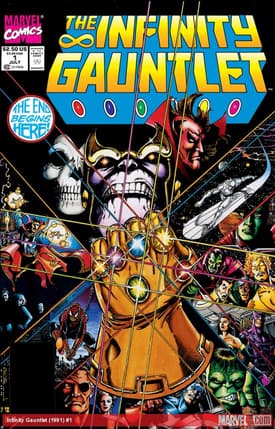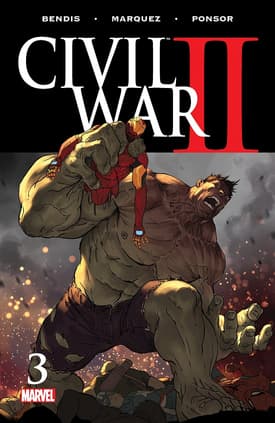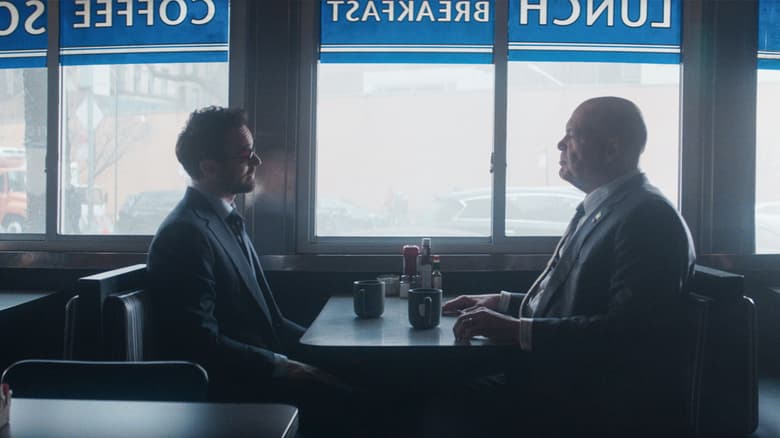The Best Avengers Comics of All Time
We selected the most memorable issue from each decade of Avengers history!
The Avengers have protected this planet (and many others) for the last 55 years. And while the group’s roster may have shifted and changed over the last five-and-a-half decades, their mission sure hasn’t; they protect the planet, stand up for the innocent, and neutralize evil wherever it's found.
Even though Earth's Mightiest Heroes have faced fights with seemingly invincible foes and (sometimes) fights amongst themselves, they've never given up. That resilience—that spirit—has led the team from their debut in 1963 through their latest appearance and iteration today.
With that in mind, we decided to look at some of the biggest, most dramatic moments in the team’s history from each decade since comics' finest super group formed.
These are the most memorable issues in Avengers history!
The 1960s: AVENGERS #1 (1963)

Back in ’63, the team had yet to earn the moniker of “Earth’s Mightiest Heroes.” Instead, they were just described as “Some of Earth’s Greatest Super Heroes!”
Founded by Hank Pym (AKA Ant-Man) and Janet Van Dyne (AKA the Wasp), the Avengers—which also included Iron Man, Thor, and Hulk—went up against the God of Mischief Loki after the evil Asgardian attempted to frame the Hulk for causing a train wreck. So, really, you can thank Loki for the formation of the Avengers.
Hulk’s final line in the issue sums up the next 55 years: “I pity the guy who tries to beat us.”
The 1970s: GIANT-SIZE AVENGERS #4 (1975)

A wedding the Marvel Universe will never forget: the dramatic nuptials of Vision and Scarlet Witch.
Not everyone was happy with the proceedings, however, as Mantis had also developed feelings for Vision. The wedding was attended by Iron Man, Thor, and even Mantis, who ascended to the stars afterwards in search of enlightenment. Groovy.
The 1980s: WEST COAST AVENGERS #1 (1984)

It took just over 20 years, but in '84 the Avengers placed a dedicated a team—and headquarters—on the American West Coast. Initially led by Hawkeye (who was hand-picked by Vision himself), the West Coast Avengers consisted of Scarlet Witch, Tigra, Mockingbird, Wonder Man, and Iron Man. After a skirmish with the team, Shroud was offered a membership, but respectfully declined.
The WCA then kicked off their special brand of justice, which would live long in the memory—and inspire the most recent iteration of the team: the new West Coast Avengers!
The 1990s: INFINITY GAUNTLET #3 (1991)

Under the leadership of Adam Warlock, the Avengers—who had just struck a rare truce with Doctor Doom—staged a daring assault on Thanos.
The Mad Titan, in an effort to impress Lady Death, wiped out half of all life in the universe with the snap of his fingers and the ol’ Infinity Gauntlet. Despite the combined efforts of Captain America, She-Hulk, Doom, Wolverine, Scarlet Witch, Silver Surfer, Spider-Man, Nova, Cyclops, and more, the Avengers faced one of their greatest defeats of all-time. Luckily, though, they'd get the chance to fight again another day.
The 2000s: CIVIL WAR #7 (2006)

In the lead-up to CIVIL WAR, the federal Superhuman Registration Act sowed a special discord within the ranks of the Avengers.
Tony Stark and Steve Rogers, once close friends, became the leading forces of two reluctantly weaponized sides of a philosophical battle. They faced off against each other in issue #7, resulting in the famous image of Iron Man firing his repulsors against Captain America’s shield.
In one of the most dramatic moments in Avengers history, Steve conceded defeat and handed himself over to the authorities in an episode that would change him, and his most famous team, forever.
The 2010s: CIVIL WAR II #3 (2016)

Disagreements among Earth’s Mightiest Heroes arose once again upon the introduction of the clairvoyant human known as Ulysses.
When one of his visions showed the Hulk on a rampage, Clint Barton took matters into his own hands and assassinated Bruce Banner. This event put Barton on trial, but also drove a deep divide between Tony Stark and Carol Danvers, who represented the differing perspectives—and splintering sides—of a war that all began with a simple difference in opinion.
The Hype Box
Can’t-miss news and updates from across the Marvel Universe!




